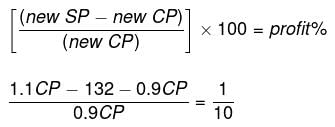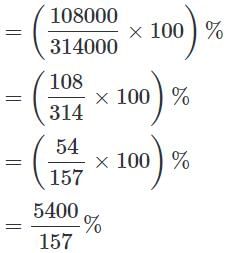CISF Head Constable Mock Test - 7 - CISF Head Constable MCQ
30 Questions MCQ Test CISF Head Constable Mock Test Series 2025 - CISF Head Constable Mock Test - 7
The rows and columns of the left matrix have been labelled as 0, 1, 2, 3, 4 and Q, R, S, T, U, whereas those of the right matrix are 5, 6, 7, 8, 9 and L, M, N, O, P. Find the correct row-column pairs out of these matrices that decode to the word - R4ZE
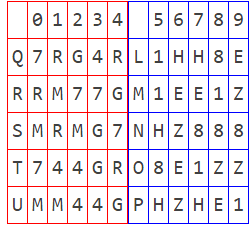
Two matrices are shown in the figure below. Their rows and columns are labelled as (0,1,2,3,4) and (5,6,7,8,9) in the manner shown. Find the correct row-column pairs out of the following matrices that decode to the word - HAND
Direction: In each question below is given a statement followed by two conclusions numbered I and II. You have to assume everything in the statement to be true, then consider the two conclusions together and decide which of them logically follows beyond a reasonable doubt from the information given in the statement.
Statements: To cultivate interest in reading, the school has made it compulsory from June this year for each student to read two books per week and submit a weekly report on the books.
Conclusions:
- Interest in reading can be created by force.
- Some students will eventually develop interest in reading.
If GO = 32, SHE = 49, then SOME will be equal to
The following line graph gives the ratio of the amounts of imports by a company to the amount of exports from that company over the period from 1995 to 2001.
What was the percentage increase in imports from 1997 to 1998 ?
A number when divided by 837 leaves a remainder of 79. What will be the remainder when the same number is divided by 31?
The numerator of a rational number is 4 less than the denominator. If the numerator is increased by 15 and denominator is decreased by 4, we get 6. Find the rational number?
Riya, Anil and Rishi start running around a circular stadium and complete one round in 15s, 12s and 21s respectively. In how much time will they meet again at the starting point?
A man sells an article at a gain of 10%. If he had bought it at 10% less and sold it for Rs. 132 less, he would have still gained 10%. The cost price of the article is
Directions: Study the following table carefully and answer the question that follow:
Number of candidates (in lakhs) appearing in a Entrance Examination from six different Cities.

Ratio of Candidates Passing and Failing Within the City
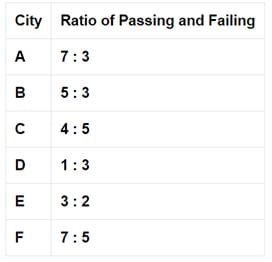
Q. The number of candidates appearing for the exam from City C is what per cent of the number of candidates appearing for the exam from City B? (rounded to nearest integer)
Directions: Study the following bar chart carefully and answer the questions given beside.
The following bar chart gives information about the number of Foreigners and Indians who visited five different places Goa, Shimla, Manali, Agra, and Pondicherry in India during the year 2017.
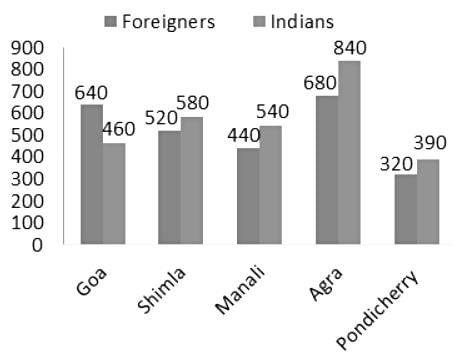
Q. The number of foreigner tourists visited in Goa during the year 2017 is approximately what percentage more than the number of foreigner tourists visited in Pondicherry during the year 2017?
Find out the Synonym of the following word:
AUGUST
In these days of inflation / a ten rupee's note will not buy you / even an ordinary meal. / No error.
Today most businessmen are very worried. To begin with, they are not used to competition.In the past they sold whatever ...(1)... produced at whatever prices they chose. But ...(2)... increasing competition, customers began to ...(3)... and choose. Imports suddenly became ...(4)... available and that too at cheaper ...(5)...
What will come in Option Five?
The CEO has proposed a new policy requiring that employees should retain all pensions indefinitely or be allowed to cash them in at retirement.
The recently discovered notes of the writer suddenly revealed that this most timidand shy of women was an intellectual giant guided in both emotional and spiritualactivities by a sharp sense of moral courage.
Direction: In each of the questions given below, a sentence is given with two blanks. From the given options, choose the one that gives the correct combination of words that fit in the blanks.
In a _______________ to the exchanges, the company said it intends to _______________ the date of submission of the Q1 results.
The active voice sentence "The teacher will grade the papers tomorrow" can be changed to passive voice as:
Direction: Read the following passage carefully and answer the question that follows.
After a worrying pre-monsoon phase between March and May, when rainfall was scarce, the current robust season in most parts of coastal, western and central India augurs well for the entire economy. Aided apparently by beneficial conditions in the Indian Ocean, very heavy rainfall has been recorded, notably in Maharashtra, Gujarat, Rajasthan, the northeastern States, Karnataka, the Konkan coast, hilly districts of Kerala and Tamil Nadu. This pattern may extend into Chhattisgarh, Odisha, Bengal and other eastern regions. A normal Indian Summer Monsoon is bountiful overall, but as last year’s flooding in Kerala, and the Chennai catastrophe of 2015 showed, there can be a terrible cost in terms of lives and property lost, and people displaced. Distressing scenes of death and destruction are again being witnessed. Even in a rain-shadow region such as Coimbatore in Tamil Nadu, the collapse of a railway parcel office after a downpour has led to avoidable deaths. What this underscores is the need to prepare for the rainy season with harvesting measures, as advocated by the Centre’s Jal Shakti Abhiyan, and a safety audit of structures, particularly those used by the official agencies. In drafting their management plans, States must be aware of the scientific consensus: that future rain spells may be short, often unpredictable and very heavy influenced by a changing climate. They need to invest in reliable infrastructure to mitigate the impact of flooding and avert disasters that could have global consequences in an integrated economy.
The long-term trends for flood impact in India have been one of declining loss of lives and cattle since the decadal high of 1971-80, but rising absolute economic losses, though not as a share of GDP. It is important, therefore, to increase resilience through planning, especially in cities and towns which are expanding steadily. Orderly urban development is critical for sustainability, as the mega flood disasters in Mumbai and Chennai witnessed in this century make clear. It is worth pointing out that the response of State governments to the imperative is tardy and even indifferent. They are hesitant to act against encroachment of lake catchments, river courses and floodplains. The extreme distress in Chennai, for instance, has not persuaded the State government against allowing structures such as a police station being constructed on a lake bed, after reclassification of land. Granting such permissions is an abdication of responsibility and a violation of National Disaster Management Authority Guidelines to prevent urban flooding. As a nation that is set to become the most populous in less than a decade, India must address its crippling cycles of drought and flood with redoubled vigour. Scientific hydrology, coupled with the traditional wisdom of saving water through large innovative structures, will mitigate floods and help communities prosper.
Q. Which among the following gives us the correct picture of monsoon in the current year as stated in the passage?
Direction: Read the following passage carefully and answer the question that follows.
After a worrying pre-monsoon phase between March and May, when rainfall was scarce, the current robust season in most parts of coastal, western and central India augurs well for the entire economy. Aided apparently by beneficial conditions in the Indian Ocean, very heavy rainfall has been recorded, notably in Maharashtra, Gujarat, Rajasthan, the northeastern States, Karnataka, the Konkan coast, hilly districts of Kerala and Tamil Nadu. This pattern may extend into Chhattisgarh, Odisha, Bengal and other eastern regions. A normal Indian Summer Monsoon is bountiful overall, but as last year’s flooding in Kerala, and the Chennai catastrophe of 2015 showed, there can be a terrible cost in terms of lives and property lost, and people displaced. Distressing scenes of death and destruction are again being witnessed. Even in a rain-shadow region such as Coimbatore in Tamil Nadu, the collapse of a railway parcel office after a downpour has led to avoidable deaths. What this underscores is the need to prepare for the rainy season with harvesting measures, as advocated by the Centre’s Jal Shakti Abhiyan, and a safety audit of structures, particularly those used by the official agencies. In drafting their management plans, States must be aware of the scientific consensus: that future rain spells may be short, often unpredictable and very heavy influenced by a changing climate. They need to invest in reliable infrastructure to mitigate the impact of flooding and avert disasters that could have global consequences in an integrated economy.
The long-term trends for flood impact in India have been one of declining loss of lives and cattle since the decadal high of 1971-80, but rising absolute economic losses, though not as a share of GDP. It is important, therefore, to increase resilience through planning, especially in cities and towns which are expanding steadily. Orderly urban development is critical for sustainability, as the mega flood disasters in Mumbai and Chennai witnessed in this century make clear. It is worth pointing out that the response of State governments to the imperative is tardy and even indifferent. They are hesitant to act against encroachment of lake catchments, river courses and floodplains. The extreme distress in Chennai, for instance, has not persuaded the State government against allowing structures such as a police station being constructed on a lake bed, after reclassification of land. Granting such permissions is an abdication of responsibility and a violation of National Disaster Management Authority Guidelines to prevent urban flooding. As a nation that is set to become the most populous in less than a decade, India must address its crippling cycles of drought and flood with redoubled vigour. Scientific hydrology, coupled with the traditional wisdom of saving water through large innovative structures, will mitigate floods and help communities prosper.
Q. Which among the following is correct regarding the response of the states to the need to tackle flood situations?
Direction: Read the following passage carefully and answer the question that follows.
After a worrying pre-monsoon phase between March and May, when rainfall was scarce, the current robust season in most parts of coastal, western and central India augurs well for the entire economy. Aided apparently by beneficial conditions in the Indian Ocean, very heavy rainfall has been recorded, notably in Maharashtra, Gujarat, Rajasthan, the northeastern States, Karnataka, the Konkan coast, hilly districts of Kerala and Tamil Nadu. This pattern may extend into Chhattisgarh, Odisha, Bengal and other eastern regions. A normal Indian Summer Monsoon is bountiful overall, but as last year’s flooding in Kerala, and the Chennai catastrophe of 2015 showed, there can be a terrible cost in terms of lives and property lost, and people displaced. Distressing scenes of death and destruction are again being witnessed. Even in a rain-shadow region such as Coimbatore in Tamil Nadu, the collapse of a railway parcel office after a downpour has led to avoidable deaths. What this underscores is the need to prepare for the rainy season with harvesting measures, as advocated by the Centre’s Jal Shakti Abhiyan, and a safety audit of structures, particularly those used by the official agencies. In drafting their management plans, States must be aware of the scientific consensus: that future rain spells may be short, often unpredictable and very heavy influenced by a changing climate. They need to invest in reliable infrastructure to mitigate the impact of flooding and avert disasters that could have global consequences in an integrated economy.
The long-term trends for flood impact in India have been one of declining loss of lives and cattle since the decadal high of 1971-80, but rising absolute economic losses, though not as a share of GDP. It is important, therefore, to increase resilience through planning, especially in cities and towns which are expanding steadily. Orderly urban development is critical for sustainability, as the mega flood disasters in Mumbai and Chennai witnessed in this century make clear. It is worth pointing out that the response of State governments to the imperative is tardy and even indifferent. They are hesitant to act against encroachment of lake catchments, river courses and floodplains. The extreme distress in Chennai, for instance, has not persuaded the State government against allowing structures such as a police station being constructed on a lake bed, after reclassification of land. Granting such permissions is an abdication of responsibility and a violation of National Disaster Management Authority Guidelines to prevent urban flooding. As a nation that is set to become the most populous in less than a decade, India must address its crippling cycles of drought and flood with redoubled vigour. Scientific hydrology, coupled with the traditional wisdom of saving water through large innovative structures, will mitigate floods and help communities prosper.
Q. Which among the following is correct regarding the impact of flood in India over the years starting from 1970s?
Directions: Out of the given alternatives, choose the one which can be substituted for the given words/sentence.
Custom of having many wives:
It is a political organisation that subscribes to a particular ideology and seeks to attain political power
In which year, the 73rd Constitutional Amendment Act (1972) was assented by the President?
Which of the following trends were seen in the Indian economy after the 1991 economic reforms?
1. The growth rate steadily increased.
2. Agriculture and allied sector continuously show a positive growth rate.
3. Share of the public sector in total investment increased.
Which of the statements given above is/are correct?
What was the purpose of the Maritime Partnership Exercise (MPX) conducted by India and France in the Bay of Bengal?
Who has been appointed as the Chief Financial Officer (CFO) of State Bank of India (SBI)?



